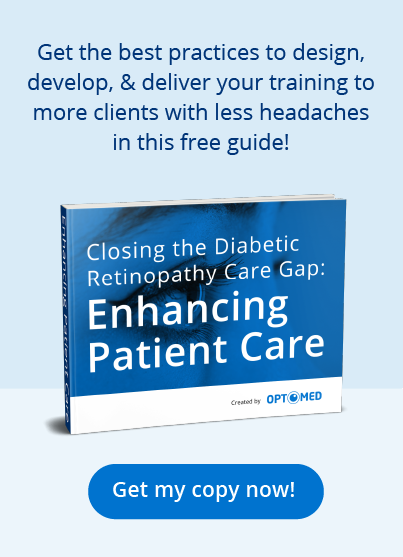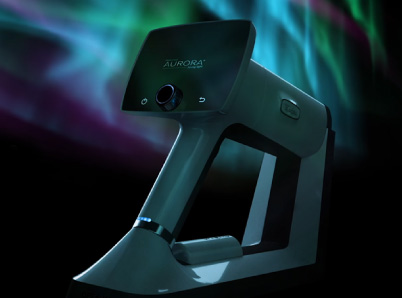Diabetic retinopathy tragically claims the eyesight of many diabetes patients around the world each year. An estimated 17 million people worldwide have been diagnosed with proliferative diabetic retinopathy. The problem is a significant one in the United States as well. The Centers for Disease Control estimates that more than 4 million people in this country suffer from diabetic retinopathy. In 15% of those cases, patients are at the highest risk of blindness.
Whether in the United States or internationally, the fact is that many of these cases are treatable when caught early. But many patients fall into a care gap created by the specialized nature of ophthalmoscopes, the primary device used to diagnose retinal eye disease.
The ophthalmoscope is primarily the province of ophthalmologists, integrated into ongoing specialized care, where it serves an important purpose. But they are not widely used in primary care, meaning that diabetics simply are not checked for signs of the disease often enough or early enough to make a difference.
Change is in the air, however. Emerging imaging technology, like a retina camera, is making it possible for the primary care physician (PCP) to play a more significant role in spotting the signs of diabetic retinopathy sooner, in the same way that doctors can help with the early detection of other potentially devastating diseases. For example, PCPs play a key role in recommending and making referrals for colonoscopies based on age, helping identify and treat evidence of cancer or precancer in the colon before it develops.
A retina camera offers the potential for more patients to receive sight-saving diagnostic screenings earlier, before the effects of retinopathy take away their ability to see. These new retina camera systems are easier to use, are more accessible, and offer a potential return on investment that could help primary care doctors spot eye disease signals that would get missed by any other approach.
The Care Gap in Diabetic Retinopathy
Diabetes exists at epidemic proportions in the United States and across the world, and it’s only going to get worse. The number of diabetes cases is forecast to grow from 425 million people in 2017 to more than 650 million in 2045. Current estimates suggest that about one in three diabetic patients develop diabetic retinopathy, and one in ten will develop a form of the disease that will put their vision at risk.
Many of these cases are preventable when caught early. But eye screenings are not as widely available as they need to be in order to make a difference in current trends. The gap is related in part to the use of the direct ophthalmoscope as the primary tool for diagnosis. This device, created in the 1850s, has served medicine well but has largely become a tool of the specialist. It can be challenging to master and requires pupil dilation, which is not a good fit for patient flow at the primary care level.
New retinal camera systems are poised to change this dynamic. These systems are ideally suited for doctors at the primary care and emergency room level to assist in preventing unnecessary blindness.
Changing the Trajectory with New Technology
The good news is that we live in the innovation age, where healthcare technology is evolving rapidly to address care gaps. An emerging system developed around specialized digital cameras, purpose-built to image the fundus, now offers the potential for closing the diabetic retinopathy gap.
Since retinal cameras are easier to use, offer a wide field of view, and do not require patient eyes to be dilated, they are a better fit for primary care practices. By adopting retinal cameras, PCPs have a powerful opportunity to save sight.
When combined with cloud-based artificial intelligence capabilities, these systems can do even more for the problem of preventing blindness. AI and machine learning can help read thousands of scans, locate the trouble spots, make predictions about those spots, and alert doctors when they need to act.
Retina Camera: Closing the Diabetic Retinopathy Care Gap
Simplifying the process of the early detection of diabetic retinopathy means more people can be screened because it changes several workflow considerations. Retinal camera systems, such as the Optomed Aurora, are non-mydriatic in nature. Doctors can examine the fundus without having to dilate the patient’s eyes, which is time-consuming and uncomfortable.
The systems are also portable and lightweight. They can be moved from exam room to exam room or taken on house calls or to remote clinics to get screenings for more people. There are other benefits as well. The digital camera captures a digital record that can be shared over a network, inserted into patient health records, or sent to specialists for remote review. AI tools can also be integrated with the camera to help speed up the identification of those patients at risk.
Optomed is focused on providing the technology, knowledge, and support to enable eye screenings for everyone, wherever they are. It is the leading innovator in affordable eye-screening capabilities that can be distributed deeper into the healthcare chain, especially at the level of the primary care doctor.
Here at Optomed, our mission is to help save the vision of millions of people. By integrating our software and artificial intelligence solutions with our camera, we enable eye screening for everyone, wherever they are. To see how we can equip you to save the sight of more patients, schedule a free consultation today!



